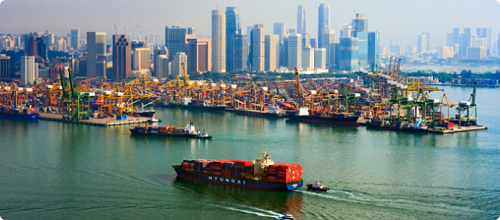By Thusitha de Silva
With another economic malaise hovering over the horizon, what are we in for? Repeat of earlier crises or just a correction?


If this is the case, the latest trade data out of Singapore indicate that not all is well in the world, despite some talk in the mainstream media of a recovery in both Europe and the US. Singapore’s non-oil domestic exports fell 6.2% year on year in August, according to International Enterprise Singapore, accelerating from a decline of 1.9% in July. Both electronic and non-electronic exports showed weakness. In particular, exports to Europe contracted by 20.8% in August, extending a 38.5% decrease in July. This is a bad sign because Europe has been Singapore’s biggest export market in the past. It suggests that Europe is still mired in its debt troubles, and there is a lack of demand for imports.
Economists, however, see an improvement in the global macroeconomic picture based on some of the latest data from around the world. A closely-followed data set is the PMI, or purchasing managers index. This is essentially a survey of companies conducted by an authority in a country (in Singapore, it’s the Singapore Institute of Purchasing and Materials Management) to see how they are doing in terms of metrics like new orders and hiring. The data has been positive of late, signalling expansions in economies. But real economies have been slow to catch up and reflect this data.
US recovery, really?
Meanwhile, a lot of data coming out of US don’t gel with the idea of a recovery there even though President Barack Obama says things are getting better. For instance, a new census report in the US. has revealed that 46.5 million Americans are living in poverty. Also one in every five households in the US were on the federal government’s Supplemental Nutrition Assistance Program (SNAP), or food stamps, in June.
The problem that has continued to plague the US since the global financial crisis in 2008 is how to kick-start the economy. The whole world needs a healthy US economy and this hasn’t been the case for a while and doesn’t look like it will happen any time soon.
The Quantitative Easing (QE) initiatives introduced by the Federal Reserve in recent years haven’t done much to help the real economy, though it has ostensibly helped to raise asset prices. And now the Federal Reserve is in a bind because it doesn’t know when to unwind QE, which is essentially an asset purchase programme. And the Federal Reserve has unexpectedly decided not to taper its asset purchases, preferring to wait for confirmation of improvement in its outlook. The market is high on liquidity and doesn’t want the Federal Reserve to turn off the tap.
With the US and European economies still sluggish, attention has turned to Asia as an engine of global growth. The biggest economies in this part of the world are China and Japan, and both countries are grappling with serious domestic issues. China has spent so much money in the last 20 years developing its infrastructure that it is now facing overcapacity issues and is focusing on improving consumption as an engine of economic growth. Japan, meanwhile, is trying to pull itself out of a deflationary phase with its own version of QE but results are unlikely to be seen for some time, if any. The award of the 2020 Olympic Games to Japan is a positive sign for its economy, but the benefits are likely only to be seen in the years leading up to the Games.
Fend for yourself, Singapore
So, for Singapore to survive the current global economic malaise, it has to somehow create growth opportunities for itself. That’s one reason why Prime Minister Lee Hsien Loong visited parts of China, like the Liaoning province in the west of the country, that he hasn’t visited before. It could also explain the plan to build a park in the open-air car park of Terminal One in Changi airport as well as plans to move Singapore’s port to Tuas, freeing up seafront land in Keppel for property development.
For a small country, Singapore’s gross domestic product (GDP) is massive–according to the World Bank, it hit US$274.7 billion in 2012, resulting in GDP per capita of US$51,709.45. This is ranked inside the top 15 in the world by the International Monetary Fund, World Bank, the CIA World Factbook and the United Nations. While many believe it’s time to slow down the frenetic quest for more growth, the government’s default mode seems to be to always go for GDP growth. One of the negative outcomes of the government’s method for this is a widening income gap (see theindependent.sg article “Minding the Gap” dated September 12, 2013)
Positively though, the government has somewhat tempered down its growth expectations compared to the past as it recognises the difficulties that the global economy continues to face. We don’t hear of 5% to 7% GDP growth anymore. Even then, it showed some optimism about the city-state’s economic prospects by raising its economic growth expectations for 2013 in August. After the economy expanded by 2.0% in the first half of the year, the Ministry of Trade and Industry raised its GDP growth target for 2013 from 1.0%-3.0% to 2.5%-3.5%. Its upward revision suggests a stronger second half of 2013 on a year-on-year basis.
However, with export numbers down, there have been suggestions of a weaker third quarter. The manufacturing output data for August due on Sept 26 will give a better indication on how the economy will fare in the third quarter. If those numbers do not shine, there could be a downgrade in the government’s economic forecast for 2013.
Thusitha de Silva has been working in financial media for the last 20 years.

